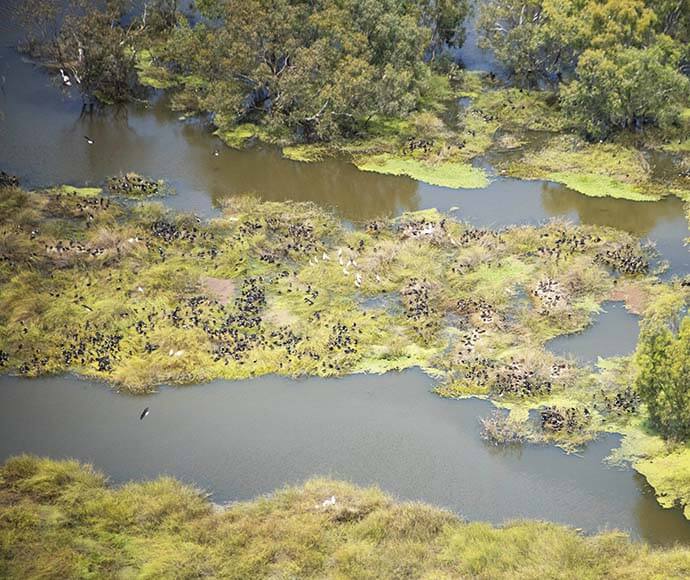On 27 June 2023, the Murrumbidgee Environmental Water Advisory Group (EWAG) met to discuss plans for the 2023–24 water year.
Water operations update
Dam storage levels are slightly less than the same time last year, but based on the forecast, levels are sufficient.
Irrigation demand is low in the upper reaches of the Murrumbidgee, with some demand downstream.
River operators plan to maintain air space and planned environmental releases from Blowering and Burrinjuck dams.
Environmental water events update and future watering
2022–23
Environmental water deliveries for the 2022–23 year included the 2022–23 Murrumbidgee native fish flow event to help meet desired flow rates below Maude and Balranald weirs, a water bird breeding event, and a flow to enhance the river health of the Yanco-Billabong system. NSW environmental water managers used water for the environment to mitigate a hypoxic water event and push flows through the system.
Water for the environment achieved positive outcomes for native fish during the 2022–23 water year, with no reported fish deaths despite the summer flood recession. There is evidence of recruitment and increased fish movement into the Murrumbidgee from the Murray or Darling systems, with data analysis to confirm the movement of the identified fish. Through increased data collection, environmental water managers are working to support the movement and recruitment of native fish to build on last year's gains.
Water managers used water for the environment to support water levels in Yanco Creek, with positive outcomes for native fish following the high flows. Increased connection of backwater wetlands provided benefits throughout the system. Accessibility issues prevented water managers from taking advantage of all natural flows.
2023–24
In the coming water year, water managers plan to:
- maintain adequate water levels in the Yanco and Murrumbidgee systems
- support native fish, maintaining a base flow for Murray cod from September
- target juvenile waterbird habitat.
Water managers agreed to leave some areas in the catchment dry to enable essential maintenance works on critical infrastructure.
The annual watering plan was provided to Environmental Water Advisory Group members for their consideration and endorsement.
Monitoring
Monitoring is continuing in the Murrumbidgee, however, some monitoring activities have been delayed because of accessibility due to flooding. Recorders have been collected throughout the Murrumbidgee and the data is being analysed.
Carp dominated catches during fish surveys, but the numbers have reduced, possibly because of the colder temperatures. Small native fish, cod, gudgeon and catfish were also found in the system.
Frogs and turtles have also been affected by the cooler temperatures, with a reduction in numbers since February. Paika Lake had the most diverse population of frogs, and adult turtles were found mostly in the Western Lakes region and Hobblers Lake.
Waterbirds also had a good year at Western Lakes.
The monitoring team is analysing data and preparing for the 2023–24 monitoring season to start in September.
Reconnecting River Country Program
Environmental Water Advisory Group members were given an update on the Reconnecting River Country Program. For more information on the Reconnecting River Country Program, go to the Reconnecting River Country Program page.

Aerial monitoring of colonial waterbird breeding near Maude found several species thriving in the conditions, including straw-necked ibis (Threskiornis spinicollis), glossy ibis (Plegadis falcinellus), egrets and cormorants.